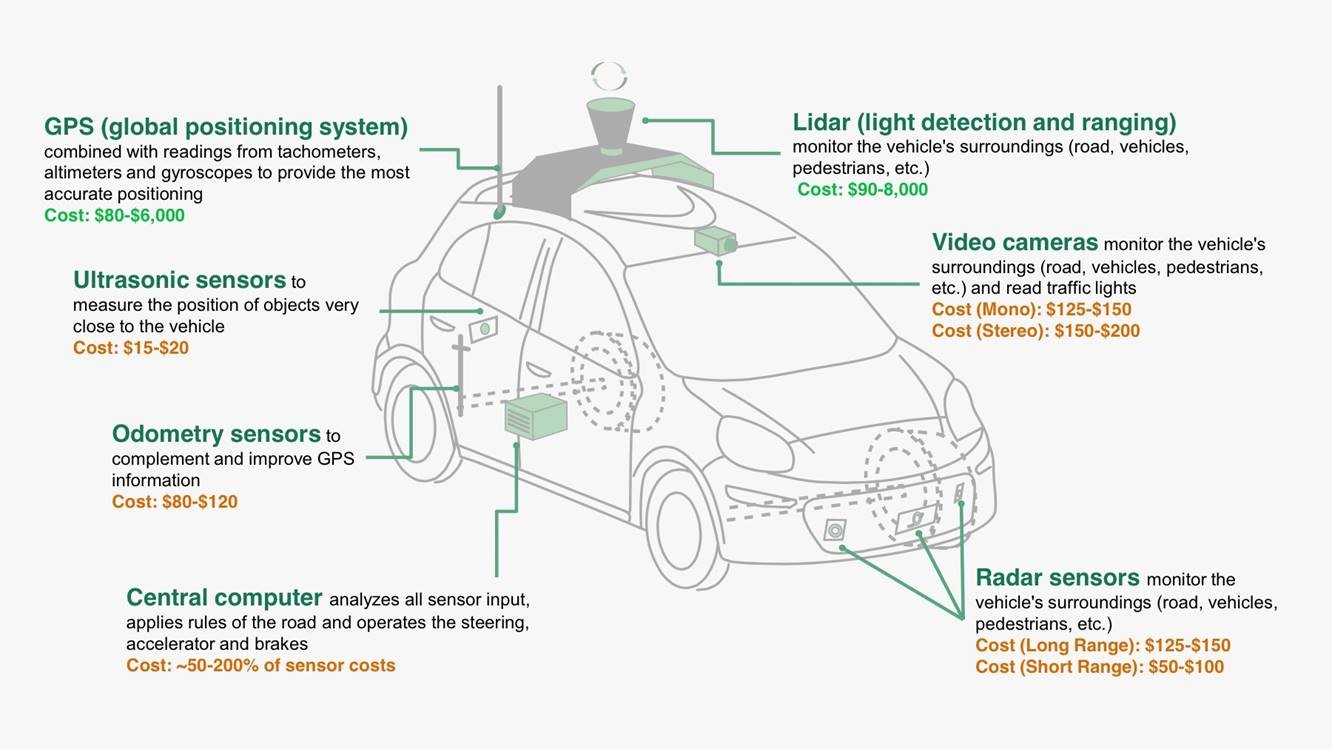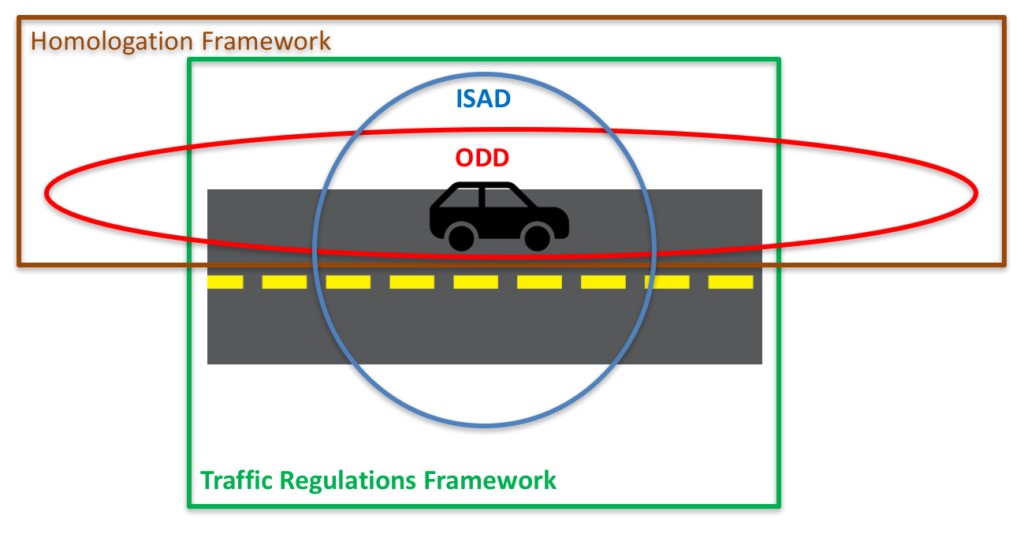The automotive sector is not only moving faster than authorities and infrastructure managers in the deployment of the autonomous vehicle (AV) but is doing so independently. In addition to the fact that the sale of vehicles is the core of its business, the main reason for this decision is that any modification of the current network involves political decisions that slow the deployment. For this reason, the reality is that the motor industry is developing technology to be self-sufficient in the short-term.
However, is it enough to guarantee the success of the autonomous vehicle? Because the answer is not simple, there are three streams of thought:
1. Infrastructure improvements are dispensable
Some companies as Uber and Waymo are developing their own vehicles with an important high-tech background with the aim of being independent of external factors and starting to provide a commercial ride-hail service as soon as possible.

Source: Duke Science & Society
Nowadays, their fleets are being tested in the US and they are working without any infrastructure improvements. The engineers are teaching the vehicles how to act in different situations (pedestrian, intersections, traffic jams…) thanks to devices that allow to plan the route 300m in advance.
This fact has two connotations:
- These sensors are really expensive and drive up the price of the vehicles.
- The systems only allow to plan the route 300m in advance. This distance allows vehicles to flow in safety conditions, but the performance will not be as fluent as expected. For this reason, the key of succeed is a constant updating of maps to be able to choose the correct route.
Some aspects to think about this trend:
- Could the cost of the high-tech embedded slow down the AV deployment? Could this cost promote just car-sharing services and make the AV ownership unavailable?
- Is every signal homogeneous to be detected?
- Will the weather conditions affect the reliability of the sensors?
- Who is going to take the lead of the maps updating? Does this business model exist now?
- Are the governments going to allow not to have a double-check system?
2. Infrastructure improvements are essential
The cost of the vehicles would be lower if some part of the technology was shifted from the vehicles to the infrastructure and, as a consequence, the AV deployment and ownership would be higher.
Some technologies, which could be introduced in the infrastructures, have already been proved by the telecommunication sector (magnets, radio frequency Identifications, Het-net, 5G, DSRC, WIFI, LTE…). So, it could be easy to adapt them for a little different use.
Here we have some aspects to think about this solution:
- Are the government’s policies going in this direction? Do the politicians have the power to do it in the short-term? Are they trying to create a interoperable framework?
- When would it take place? Is the Administration fast enough to adapt infrastructures for AV?
These questions are more related with political decisions than with technological problems causing that this trend is the least followed because the automotive sector won’t wait for a complete adaptation of the network.
3. Infrastructure improvements are complementary
Maybe the best recipe is a mix between both options above. Automotive sector is going to keep working on their technology (LIDAR, GPS, machine learning …) and infrastructure need to start thinking how to upgrade the roads for the future.
The most dangerous period will be when conventional and automated vehicles coexist in our road. For this period, the main target of the infrastructure should be to design, upgrade and adapt both physical and digital elements to enable a safe an efficient traffic due to for an AV the behavior of a conventional driver is unknow. For this reason, infrastructures could be over- equipped to guarantee safety the first years.
However, once the penetration of the autonomous vehicle is greater, infrastructure is expected to be necessary only in the blind spots of the vehicle.

Source: INFRAMIX
Therefore, it seems reasonable to think that collaboration between the two sectors will allow both the safe circulation of vehicles and the optimization of investments in the network. Currently, some European projects are working in this direction as it seems the best way to ensure the success of autonomous vehicles.
